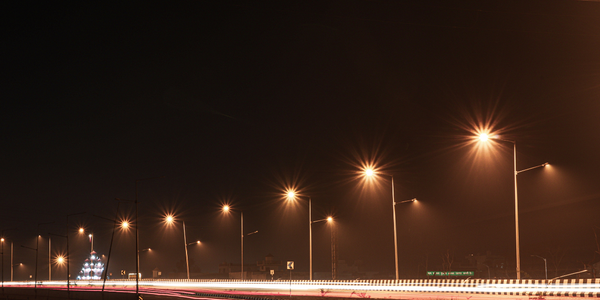Company Size
1,000+
Region
- Asia
Country
- Lebanon
Product
- CARTO platform
Tech Stack
- SQL
- APIs
- Dropbox
Implementation Scale
- Enterprise-wide Deployment
Impact Metrics
- Customer Satisfaction
- Innovation Output
- Productivity Improvements
Technology Category
- Analytics & Modeling - Real Time Analytics
- Application Infrastructure & Middleware - Data Exchange & Integration
- Platform as a Service (PaaS) - Data Management Platforms
Applicable Industries
- Cities & Municipalities
- National Security & Defense
Applicable Functions
- Field Services
- Logistics & Transportation
Use Cases
- Public Transportation Management
- Public Warning & Emergency Response
- Real-Time Location System (RTLS)
Services
- Data Science Services
- System Integration
About The Customer
The United Nations High Commissioner for Refugees (UNHCR) is a global refugee agency dedicated to protecting the rights of and building a better future for refugees, forcibly displaced communities, and stateless peoples. Created in the aftermath of the 2nd World War, the UNHCR’s mission has only grown in importance as the global tally of forcibly displaced people nears 70 million. Since the outbreak of civil war in Syria in 2011, over 5.6 million people have fled the country in an effort to escape the violence. With over 1.5 million refugees arriving over the last 7 years (second only to Turkey), Lebanon has shouldered much of the weight of the crisis. A small country (ranked 161st in area, the world's 7th smallest non-island nation) with only 4 million citizens, the influx has been impactful and resources for supporting refugees have to be tactically optimized.
The Challenge
The UNHCR’s Inter-Agency Coordination Unit based in Beirut, Lebanon’s capital and largest city, operates at the epicenter of a complex web of refugee support and response. They coordinate between over 200 organizations, governmental, NGO, and private sector. In order to effectively coordinate, they created 12 working groups, each with a distinct focus area. These working groups, supported by a unified IT infrastructure, create and execute on 4-year plans while also meeting unexpected challenges with rapid response. The refugee crisis, and the support system that has risen up to help refugees in Lebanon, is complex. Unofficial settlements pop-up regularly and the landscape is constantly shifting. Government policies impact refugee settlement status, environmental factors impact refugee safety, shifting populations require constant re-prioritization and resource allocation. While having this data is a great start, for the Inter-Agency Coordination Unit’s working groups to leverage the data towards their 4-year plans, and for emergency service and rapid response efforts, they also need a system that allows this data to be accessed, visualized, analyzed, and disseminated across their 200 partner organizations.
The Solution
The Inter-Agency Coordination Unit has leveraged the CARTO platform to centralize efforts for data management and maintenance, to create on-the-fly visualizations and apps for emergency response, to understand the impacts of changing policies and more. In order to coordinate their working groups and their complex network of partners, the Unit has created an Information Hub, where those partners can find and share information, data and tools. This site also has a Map Hub which links directly to their CARTO dashboard. Using CARTO’s APIs and connectors to Dropbox, the Coordination Unit is able to make sure that their visualizations and applications are updated with the latest data from their on-the-ground teams in real time. The Inter-Agency Coordination Unit’s rapid-response capabilities were put to the test when Storm Norma hit the country on January 5th, 2019. The storm lasted 5 days, blanketed areas of higher elevation with up to 2 meters of snow, and caused severe flooding across the country. In order to coordinate emergency response, the UNHCR team used CARTO in conjunction with their well-maintained data sets, and live storm data to visualize and project impact.
Operational Impact
Quantitative Benefit

Case Study missing?
Start adding your own!
Register with your work email and create a new case study profile for your business.
Related Case Studies.

Case Study
Turning A Stadium Into A Smart Building
Honeywell created what it called the “intelligent system” for the National Stadium in Beijing, China, turning the venue for the opening and closing events at the 2008 Summer Olympics into a “smart building.” Designed by highly controversial artist Ai Weiwei, the “Bird’s Nest” remains one of the most impressive feats of stadium architecture in the world. The 250,000 square meter structure housed more than 100,000 athletes and spectators at a time. To accommodate such capacity, China turned to Honeywell’s EBI Integrated Building Management System to create an integrated “intelligent system” for improved building security, safety and energy efficiency.
.png)
Case Study
Smart Street Light Network (Copenhagen)
Key stakeholders are taking a comprehensive approach to rethinking smart city innovation. City leaders have collaborated through partnerships involving government, research institutions and solution providers. The Copenhagen Solutions Lab is one of the leading organizations at the forefront of this movement. By bringing together manufacturers with municipal buyers, the Copenhagen Solutions Lab has catalyzed the development and deployment of next-generation smart city innovations. Copenhagen is leveraging this unique approach to accelerate the implementation of smart city solutions. One of the primary focus areas is LED street lighting.

Case Study
Buoy Status Monitoring with LoRa
The Netherlands are well-known for their inland waterways, canals, sluices and of course port activities. The Dutch Ministry of Infrastructure indicates that there are thousands of buoys and fixed items in and near water environments that would profit from IoT monitoring. One of the problems with buoys for example, is that they get hit by ships and the anchor cable breaks. Without connectivity, it takes quite some time to find out that something has happened with that buoy. Not to mention the costs of renting a boat to go to the buoy to fix it. Another important issue, is that there is no real-time monitoring of the buoys at this moment. Only by physically visiting the object on the water, one gains insight in its status.

Case Study
China Mobile Smart Parking
Smart Parking, powered by NB-IoT technology, is making it easier for drivers to find free parking spots. Cities can better manage their parking assets and maximize the revenue available to them as a result. Drivers searching for parking create congestion and pollution by circling and hunting for available parking. Smart Parking services are able to significantly ease these problems by guiding a driver directly to a parking space.

Case Study
Barcelona Case Study
Barcelona’s heavy traffic and its associated high levels of pollution were the primary factors that motivated some companies and universities to work on strategies for improving traffic in the city centre. Bitcarrier is one of the technologies involved in the In4Mo Project, whose main objective is to develop the applications that form the core of smart mobility, one of the fundamental pillars of the smart city concept.




